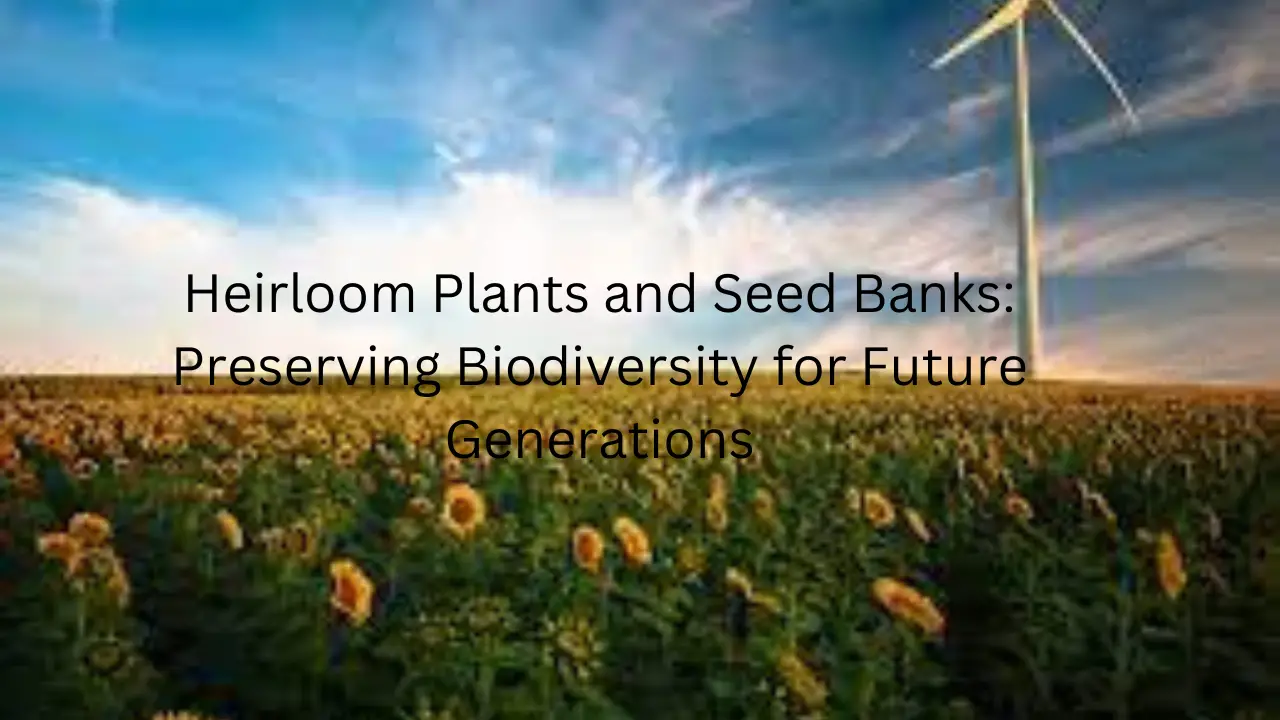
VASAGLE Farmhouse Coffee Table with Storage, Square Coffee Table for Living Room, Center Table with Flip-Top Lids, Honey Brown ULCT232K41
5% OffHeirloom Plants and Seed Banks: Preserving Biodiversity for Future Generations
Introduction
In today’s fast-paced world, where convenience often trumps tradition, the importance of preserving heirloom plants and establishing seed banks cannot be overstated. This article delves into the fascinating world of heirloom plants, the critical role they play in safeguarding our agricultural heritage, and the significance of seed banks in ensuring a sustainable future.
What Are Heirloom Plants?
Heirloom plants are like living time capsules, carrying with them the history and flavors of generations past. These plants are open-pollinated, which means they are naturally pollinated by wind, insects, or birds, and their seeds can be saved and replanted year after year without losing their distinctive traits.
The Rich Heritage of Heirloom Varieties
Heirloom plants come in a dazzling array of shapes, sizes, and colors. These varieties have been lovingly passed down through families and communities for centuries. They offer a connection to our agricultural roots and a taste of the past, with each variety possessing unique flavors and characteristics that modern hybrid plants often lack.
The Threat to Heirloom Diversity
Unfortunately, the rich diversity of heirloom plants is under threat. Modern agriculture has favored uniformity and mass production, leading to the decline of many heirloom varieties. As a result, we risk losing invaluable genetic resources and the flavors that define our culinary heritage.
The Role of Seed Banks
Seed banks are the guardians of our agricultural diversity. They are repositories where seeds from various plants, including heirlooms, are collected, stored, and carefully preserved. These institutions serve as insurance against crop failures, diseases, and environmental disasters.
Conserving Heirloom Plants in Seed Banks
One of the key missions of seed banks is to collect and conserve heirloom plant seeds. By storing these seeds in controlled environments, they ensure that these precious genetic resources remain viable for future generations. This effort is crucial in preventing the extinction of heirloom varieties.
The Global Impact
Heirloom plants and seed banks have a global reach. Organizations like the Seed Savers Exchange in the United States and the Global Crop Diversity Trust work tirelessly to safeguard heirloom varieties and ensure that these plants continue to thrive.
Benefits of Heirloom Plants
1. Biodiversity Conservation
Heirloom plants are a treasure trove of genetic diversity. Preserving them helps maintain a resilient ecosystem and ensures our food security in the face of changing climates and emerging pests.
2. Culinary Delights
The unique flavors and textures of heirloom produce enrich our culinary experiences. From vibrant heirloom tomatoes to heritage beans, these plants provide a sensory journey that modern hybrids can’t replicate.
3. Sustainability
Heirloom varieties are well-suited to organic farming practices, reducing the need for synthetic pesticides and fertilizers. Their resilience contributes to more sustainable and environmentally friendly agriculture.
4. Cultural Heritage
Heirloom plants are cultural symbols, connecting us to our ancestors and traditions. Growing these plants can be a way of preserving cultural heritage and passing it on to future generations.
How You Can Contribute
As individuals, we can play a part in preserving heirloom plants and supporting seed banks:
- Plant Heirloom Varieties: Start growing heirloom plants in your garden to promote biodiversity and enjoy the unique flavors they offer.
- Support Seed Banks: Donate to or volunteer at seed banks and organizations working to conserve heirloom varieties.
- Share Seeds: Exchange heirloom seeds with fellow gardeners to keep these plants thriving in different regions.
- Educate Others: Spread awareness about the importance of heirloom plants and seed banks in your community.
Conclusion
Heirloom plants are more than just seeds; they are living connections to our past and a source of hope for the future. Seed banks play a pivotal role in safeguarding these treasures for generations to come. By embracing heirloom varieties and supporting seed banks, we can ensure that our agricultural heritage remains intact and that the flavors of the past continue to enrich our lives.
FAQs
1. What makes heirloom plants different from hybrid plants?
Heirloom plants are open-pollinated and have a history of being passed down through generations. They maintain their unique traits when saved and replanted. Hybrid plants, on the other hand, are the result of crossbreeding between different varieties and may not produce consistent offspring.
2. Are heirloom plants more susceptible to diseases?
Not necessarily. While some heirloom varieties may lack disease resistance bred into modern hybrids, proper cultivation practices and care can help prevent disease issues.
3. How can I find heirloom seeds to start my garden?
You can find heirloom seeds through specialized seed companies, local seed swaps, and online seed exchanges. Many heirloom varieties have dedicated enthusiasts who share seeds within their communities.
4. Do seed banks only store heirloom seeds?
No, seed banks store a wide range of plant seeds, including modern varieties and wild species. Their primary goal is to conserve genetic diversity to ensure food security and biodiversity.
5. Can I visit a seed bank and see the seeds?
Some seed banks offer tours and educational programs to the public. It’s best to check with your local seed bank or research institution for their visiting policies.











